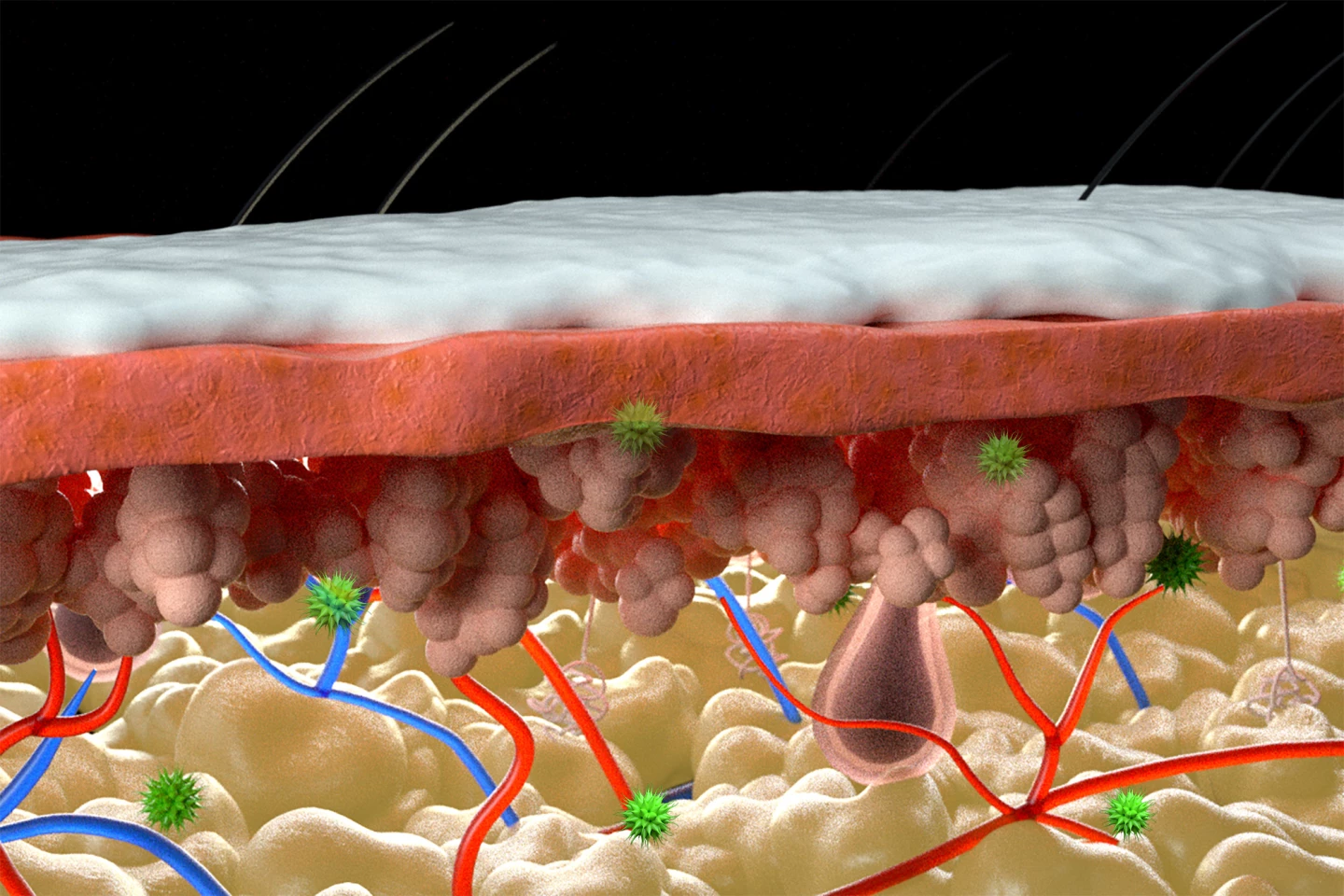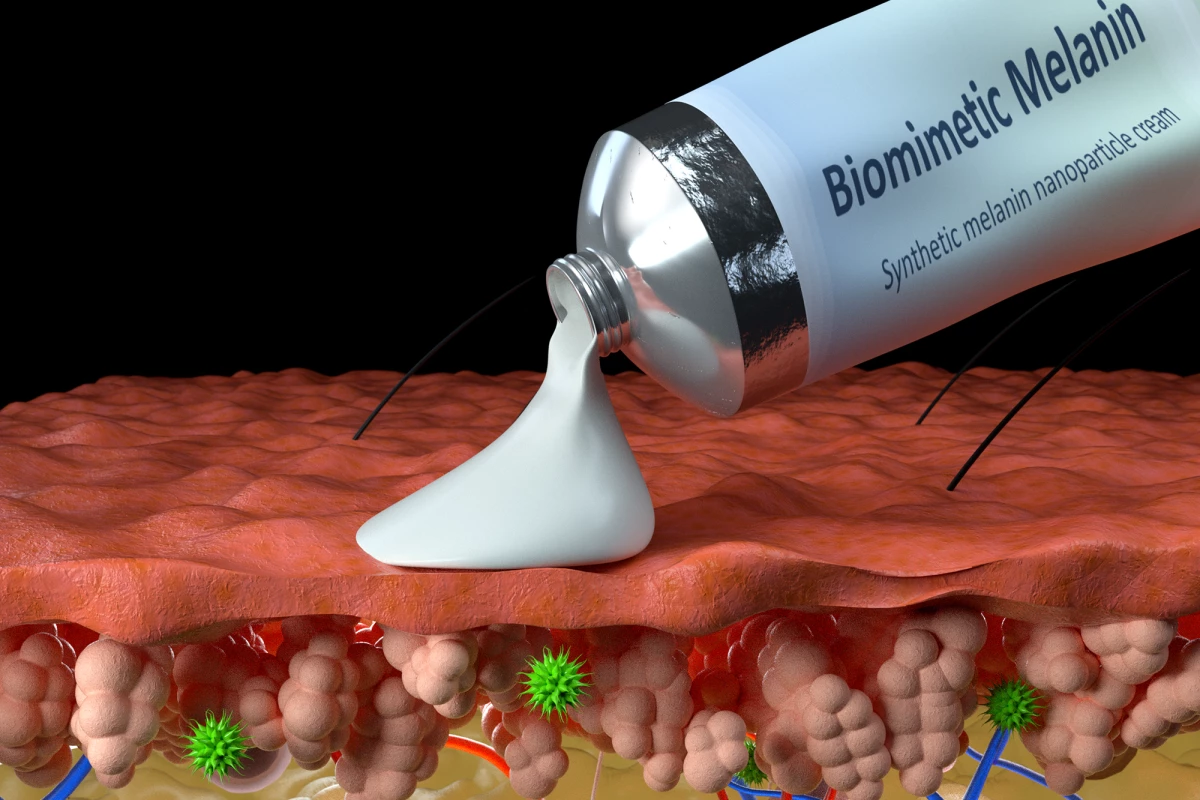Researchers have created a cream containing a souped-up, synthetic version of the free-radical-removing melanin we produce naturally to protect skin from sun damage and accelerate the healing of existing damage. They see it being added to sunscreens and moisturizers and as a treatment for burns, blisters, and open sores.
Our skin is our largest organ, and as such, it’s prone to exposure to damaging environmental factors like UV light, toxins, and trauma. It’s well known that sun damage can lead to skin aging and skin cancer.
Skin healing is a complex process involving multiple cell types, growth factors and signaling molecules. One of the main mechanisms underlying impaired skin healing and chronic wounds is oxidative stress. The excessive production of free radical species, including reactive oxygen species (ROS), leads to molecular dysfunction, cellular damage, and pathological inflammation.
Researchers at Northwestern University have targeted these damaging free radicals by developing a synthetic version of melanin, the body’s natural antioxidant and proficient radical scavenger, to soak them up, protecting skin from sun damage and accelerating healing.
Melanin provides pigmentation to our skin, eyes, and hair. It protects cells from sun damage, evident from the tanning that occurs in response to exposure to sunlight as a result of the increased production of melanin. Aware that melanin is also a natural free radical scavenger, the researchers developed biomimetic, nanoscale synthetic melanin particles (SMP), engineering them to have a greater ability to scavenge free radicals.
“The synthetic melanin is capable of scavenging more radicals per gram compared to human melanin,” said Nathan Gianneschi, a corresponding author of the study. “It’s like super melanin. It’s biocompatible, degradable, non-toxic and clear when rubbed onto the skin. In our studies, it acts as an efficient sponge, removing damaging factors and protecting the skin.”
The researchers, who’ve been studying melanin for nearly 10 years, first tested their synthetic melanin as a sunscreen to prevent UV-induced skin injury.
“It protected the skin and skin cells from damage,” Gianneschi said. “Next, we wondered if the synthetic melanin, which functions primarily to soak up radicals, could be applied topically after a skin injury and have a healing effect on the skin. It turns out to work exactly that way.”
They used a chemical to create a blistering reaction to a human skin tissue sample in the lab. The blistering caused separation of the upper layers of the skin.
“It was very inflamed, like a poison ivy reaction,” said Kurt Lu, the study’s co-corresponding author.
The researchers applied their melanin cream to the skin sample and noticed that within a few days, the cream facilitated an immune response by first helping the skin’s own radical scavenging enzymes to recover, and then halting the production of inflammatory proteins. They observed that the application of the cream caused an accumulation of anti-inflammatory immune cells in the skin, triggering a cascade of responses that greatly increased healing rates, including preservation of the healthy skin layers underneath the chemical burn. The blistering persisted in control samples that did not have the melanin cream applied.

The researchers say that the cream provides two levels of protection: local, to repair the skin at the surface, and systemic, through its activation of the immune system to assist that repair.
“The treatment has the effect of setting the skin on a cycle of healing and repair, orchestrated by the immune system,” Lu said.
As part of research programs funded by the US Department of Defense (DOD) and the National Institutes of Health (NIH), the researchers found that dying a military uniform black with melanin absorbed noxious nerve gas. And they noted that melanin also absorbs heavy metals and other toxins.
“Although it can act this way naturally, we have engineered it to optimize absorption of these toxic molecules with our synthetic version,” said Gianneschi.
The researchers envision their synthetic melanin being added to sunscreen to boost its level of UV protection, and as an enhancer in moisturizers to promote skin repair. And it could potentially be used for burns, blisters and open sores, the researchers say.
“You could put it on before you go out in the sun and after you have been in the sun,” said Lu. “In both cases, we showed reduction in skin damage and inflammation. You are protecting the skin and repairing it simultaneously. It’s continuous repair.”
The study was published in the journal NPJ Regenerative Medicine, and the below video, produced by Northwestern University, demonstrates how the melanin cream works.
Source: Northwestern University






